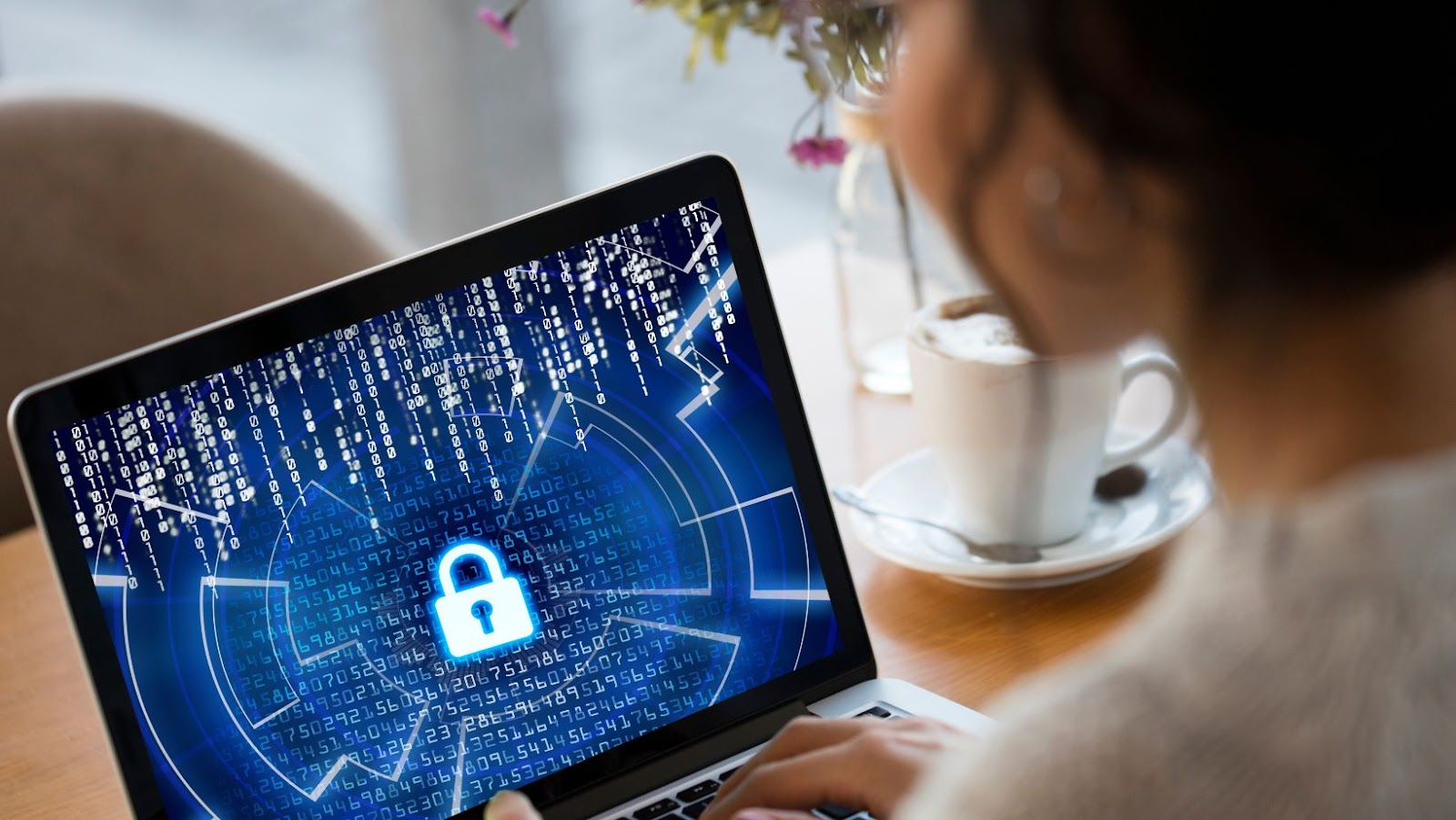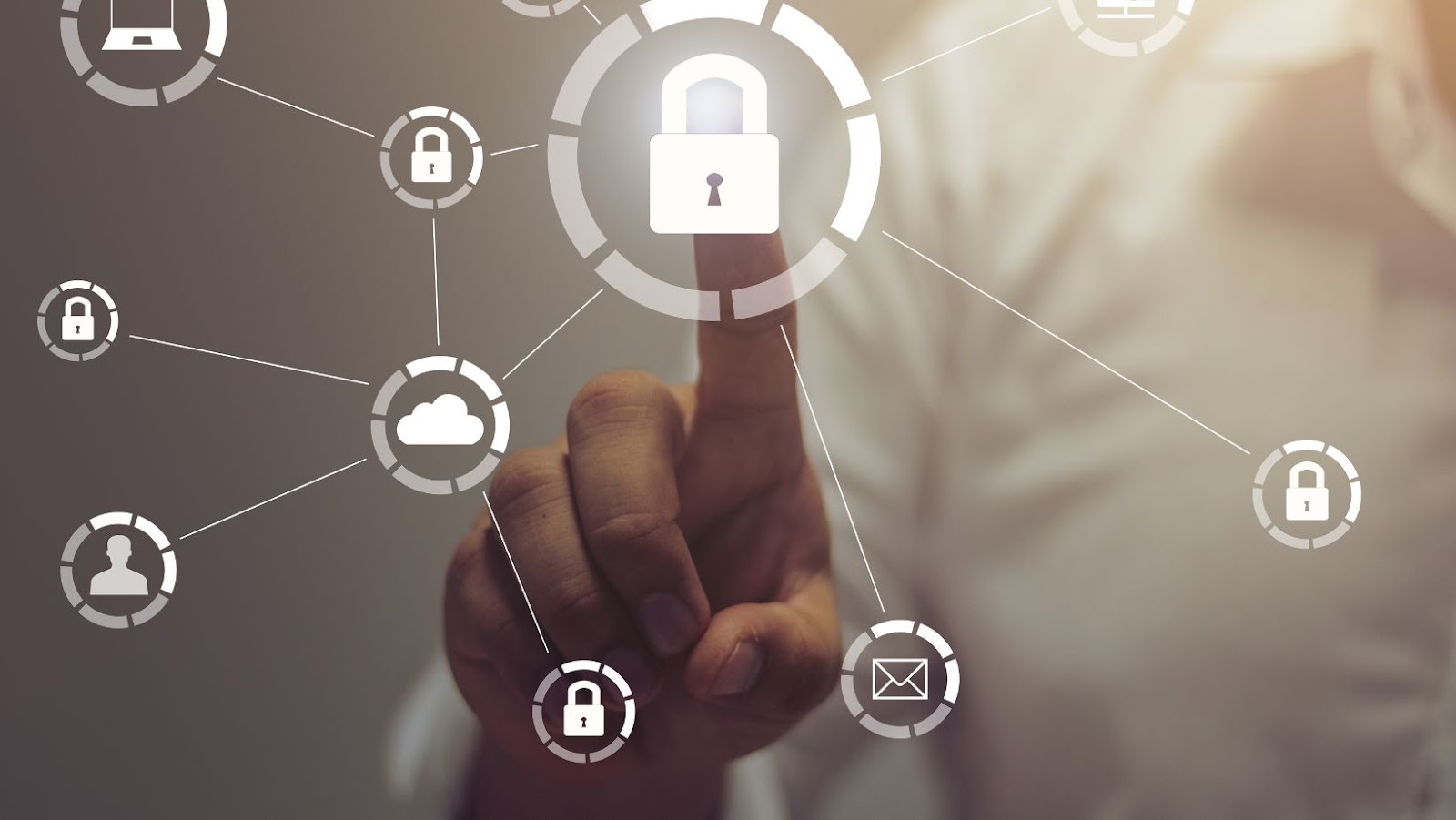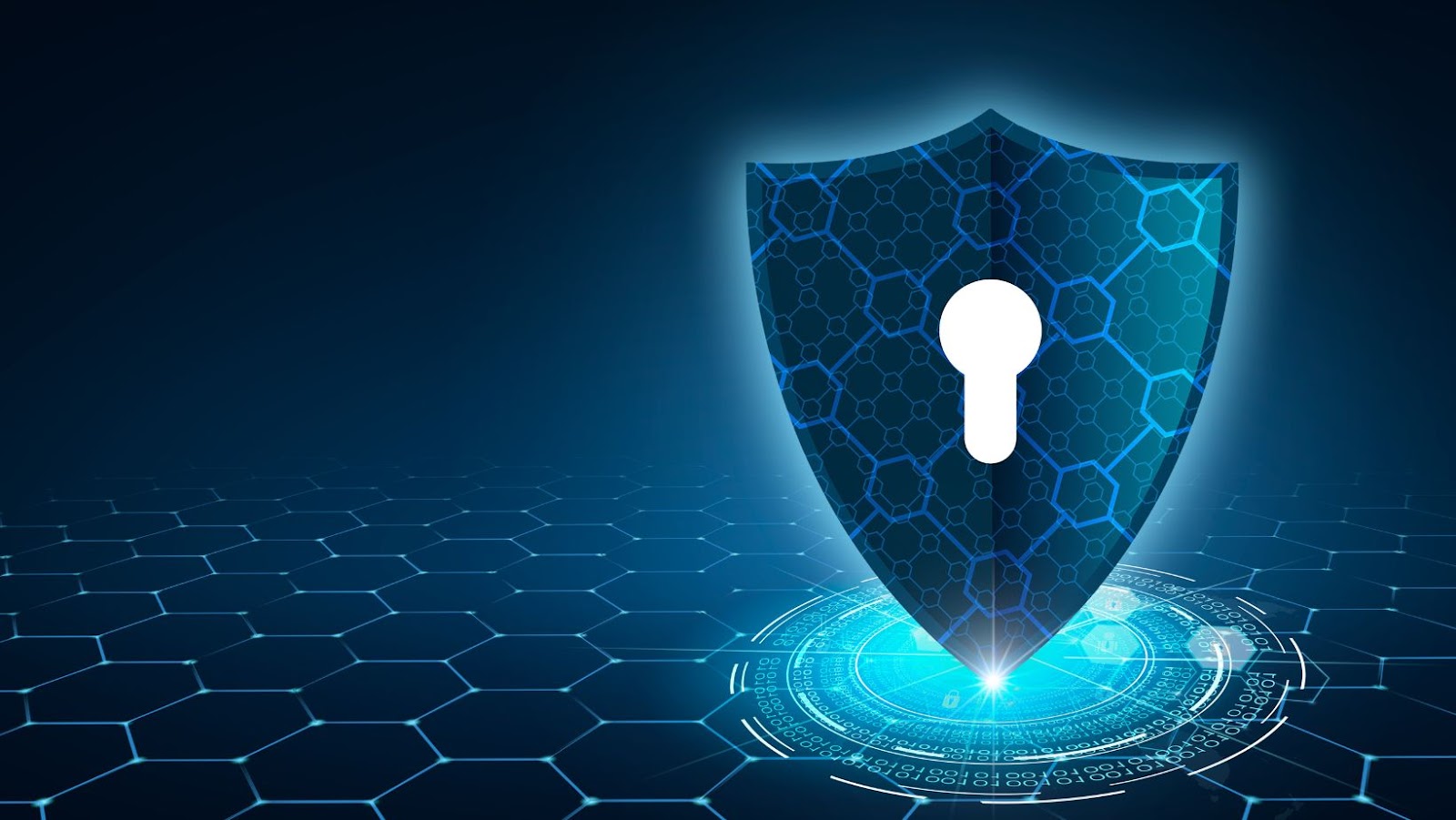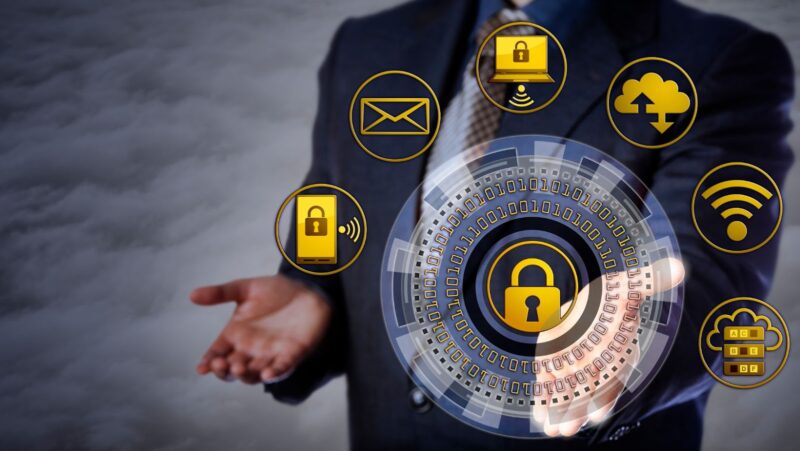
CYBERSECURITY VANTA 10M ARRWIGGERSVENTUREBEAT
Cybersecurity has become increasingly important in today’s digital world, where hackers continuously try to find new ways to exploit digital systems. As a result, organisations are investing more in cybersecurity technologies like the CYBERSECURITY VANTA 10M ARRWIGGERSVENTUREBEAT platform.
This platform offers a comprehensive suite of features to help organisations protect their data and systems from security threats. In this article, we’ll introduce the importance of cybersecurity and discuss the key features of CYBERSECURITY VANTA 10M ARRWIGGERSVENTUREBEAT.
Definition of cybersecurity
Cybersecurity is the practice of protecting systems, networks, and programs from digital attacks. These cyberattacks usually aim to access, change, or destroy sensitive information, extort money from users, or interrupt normal business processes. Cybersecurity includes measures that can be taken to protect a computer or system against unauthorised access. It involves a set of policies and principles that help organisations defend against threats arising from malicious software imports and digital intrusions.
Cybersecurity aims to protect the confidentiality, integrity, and accessibility of data used in information systems. This information can include intellectual property; customer/client passwords; financial records; employee records; software codebases; and mission-critical systems. An attacker may use several methods to breach these systems including phishing emails with malicious attachments or links designed to download malware onto the target’s computer system. Other methods for breaching systems include exploiting vulnerabilities in existing applications that allow attackers remote access into systems without requiring user credentials.
Cybersecurity is not only important for companies and organisations but also for individuals whose data may be at risk from cybercriminals or hackers who use digital means to steal personal information such as credit card details or Social Security numbers to commit fraud or identity theft on an unprecedented scale. Therefore every user needs to take appropriate steps to protect themselves online by keeping their operating systems up-to-date with patch releases and utilising antivirus software on their computers as well as strong passwords that use a combination of uppercase letters, lower case letters, numbers and symbols on all their accounts (both personal and work).
Reasons for increased focus on cybersecurity
In today’s digital age, cybersecurity is becoming more important than ever. Increasing reliance on the internet has meant that companies and organisations now have an even greater need to safeguard their data and systems.
Organisations need to strengthen their cybersecurity measures with the recent surge of cyberattacks, like Vanta 10M, Arrwiggers, and VentureBeat.
This article will discuss the different reasons why it is critical to focus on cybersecurity.
Growing sophistication of cyber attacks
The growing sophistication of cyber attacks is a major factor that has increased the need for enhanced cybersecurity. Cybercriminals are constantly evolving tactics, utilising increasingly innovative approaches to penetrate networks, disrupt operations and gain access to sensitive data. In addition, as the number of connected devices continues to rise, the attack surface increases exponentially making it more complex for individuals, small businesses, and large organisations to properly secure their digital assets.
Another reason there is renewed emphasis on cybersecurity is that the potential cost associated with a successful attack is incredibly high. Not only are businesses losing customers’ trust due to data leaks but they could also be exposed to extortion schemes or be liable for compliance breaches depending on the nature of information stolen or leaked. All these threats have made strong cybersecurity measures paramount in today’s digital landscape.
Organisations and businesses need to maintain safeguards against not only external but internal threats as well. For example, malicious insiders could attempt to steal company data or critical systems accessed through privileged accounts which makes protection from insider threats an essential component in any organisation’s overall security strategy.
Technological advances have made it easier for criminals who want to exploit vulnerable systems, including attackers weaponizing artificial intelligence (AI) tools to launch sophisticated cyberattacks more quickly and efficiently than before. In such circumstances focusing heavily on developing an effective countermeasure strategy becomes even more important because incidents can now spread faster than ever before due to automation capabilities offered by AI-driven attacks.
Increased reliance on digital technology
Our world is becoming increasingly digital, with technology permeating every corner of our lives. Today, numerous devices ranging from smart phones to computers, networks to the IoT (Internet of Things) help simplify tasks and provide unprecedented access to information. This has made reliance on this technology crucial for everyday life.
However, this shift allows criminals to target massive numbers of people easily. Cyber-attacks could be aimed at extracting sensitive data or disrupting business or government operations. Personal safety and economic stability can no longer be taken for granted as long as internet access exists.
Organisations implementing digital systems must pay attention to their cyber-security defences to protect private data and avoid data leakage or abuse by hackers that may exploit security vulnerabilities in their system’s infrastructure or codebase. Additionally, having a strong infrastructure and secure procedures gives organisations an edge over hackers who may seek easy targets by exploiting existing weaknesses or gaps in security measures that should have been covered instead.
To remain safe online, organisations must ultimately invest time and resources into developing an effective technical framework for defence against threats and processes for identifying potential threats before they occur and reacting quickly and efficiently in the face of an attack. However, great care must be taken when doing so not only because it helps protect vital information from falling into the wrong hands but also because failure to adhere to industry standards can have devastating ramifications on customer trust, reputation and even regulatory implications that may result from not protecting customer data adequately and properly abiding by cybersecurity regulations such as GDPR (General Data Protection Regulation).

Types of Cyber Attacks
Cyber attacks are a serious threat to businesses and individual users alike. They come in many forms and can cause serious damage to your data, systems, and reputation.
In this article, we’ll cover the different types of cyber attacks, the different methods attackers use, and how to protect yourself from cyber attacks.
Phishing
Phishing is a cyber attack that uses social engineering techniques to deceive users into revealing confidential information or executing malicious code. It is one of the most common – and dangerous – forms of cybercrime because it targets employees, customers, or partners through email or text messages that often appear to come from a trusted source. These messages typically ask the user to provide personal information (such as an account or login details) or click on a link that leads them to a malicious website.
In many cases, these messages look very convincing and may appear from an official corporate entity, so users may be tempted to provide their data. However, if these details are revealed, attackers can use them to access secure systems and networks. The long-term effects of this type of attack can be far-reaching with many financial and legal implications for the victims.
To help mitigate the potential damage from phishing attacks, organisations should implement robust cybersecurity policies and anti-phishing software solutions.
Malware
Malware is an all-encompassing term for any type of malicious software intended to cause damage to a targeted device or network. Malware encompasses various types of malicious software including viruses, worms, Trojans, spyware, adware and ransomware. Depending on the type of malware, it can easily spread through downloads and email attachments or by exploiting operating systems and malicious links. Cyber criminals use malware to gain access to a person’s data or infiltrate their system and disrupt its function.
When protecting against malware attacks, prevention is the best approach. It’s important to be aware of what kind of suspicious emails you may receive and not click on links or download any documents or websites that seem out of the ordinary. Also, ensure your system is always up-to-date with the latest security patches and antivirus software updates to prevent these attacks.
Suppose a device is already infected by malware. In that case, several solutions are available to try and remove/neutralise it such as anti-malware tools or specialised software programs which can detect, identify and remove various types of malicious code from the device to protect it from further damage.
DDoS
Distributed Denial of Service (DDoS) attacks happen when multiple systems flood the bandwidth or resources of a targeted system, usually one or more web servers. DDoS attacks are designed to inundate the target with so much traffic that it cannot respond to legitimate requests and remains inaccessible to regular users. This attack is a malicious attempt to disrupt normal, day-to-day operations.
The perpetrator acquires a network of zombie computers by sending out mass emails containing malicious code or installing suspicious software on websites. These zombie computers automatically inform the attacker when they are active and available for use in an attack. A perpetrator then instructs these computers, also called “botnets”, to bombard their target with large volumes of Internet traffic simultaneously to exhaust its level of service or bandwidth availability and cause it to crash or become unavailable. The attacking botnet can consist of thousands or even millions of hijacked computers executing complex algorithms that require no human intervention and can be extremely difficult to trace and block.
DDoS attacks are serious threats against IT systems and should be taken seriously by all businesses regardless of size, sector, industry diversity or vertical focus. It is important not only for companies being attacked directly, but also for those who use affected services and other companies that might become innocent casualties during an attack campaign on other networks connected within the same physical infrastructure segment (including ISPs). To protect yourself from DDoS attacks, thoroughly implement security measures including application deployment firewalls and intrusion protection solutions and create internal response plans if an attack occurs.

Best Practices for Cybersecurity
With increasingly increasing businesses adopting digital platforms, knowing cyber security best practices is important. Cybersecurity not only protects businesses from threats, but also helps to ensure data privacy and prevent cyber-attacks.
This section will discuss the best practices for cybersecurity, such as using antivirus software, implementing two-factor authentication, and monitoring traffic.
Implementing strong passwords
An essential element of cybersecurity is implementing strong passwords that are difficult to guess. A strong password should have at least 8 characters, combining upper- and lower-case letters, numbers, and symbols. Additionally, it is important to never use the same password for multiple accounts.
A commonly used best practice for creating secure passwords is the “passphrase” method—using a phrase or lyric from a song with numbers and special characters instead of some letters. For example, “G0t to lOve Y@e!” would be an example of a secure passphrase.
It is also important for users to regularly update their passwords to ensure maximum protection from potential cyber threats.
Utilising two-factor authentication
Two-factor authentication (2FA) is an increasingly important technology in today’s connected world. By requiring users to provide two pieces of information – something they know (like a username and password) and something they have (like an authentication code sent via text message), two-factor authentication can make it significantly more difficult for attackers to gain access to an account or system.
When utilised properly, two-factor authentication can be an extremely effective security. When combined with strong passwords, two-factor authentication prevents most basic attacks such as credential stuffing or brute force attempts from succeeding. In addition, it ensures that even if attackers somehow manage to get their hands on a user’s login credentials, they still won’t be able to gain full access without the second piece of information supplied by the legitimate user.
For organisations and individuals to effectively use two-factor authentication, it should be employed across all user accounts and systems wherever possible. Although some services may not support consumer 2FA (such as older versions of Windows or email clients), modern systems often have built-in support for this type of technology, making implementation and setup relatively simple. Additionally, any services that do not natively support 2FA could potentially use third party solutions such as Authy or Google Authenticator to import necessary codes while still providing the same level of protection as those that do provide built in support.
Furthermore, organisations should always create unique passwords per user account that are stored securely in a password manager. Finally, consider using multi-factor authentication when extra layers are needed—especially when accessing sensitive data or applications such as financials or healthcare systems.
Keeping software up-to-date
In today’s information-rich environment, maintaining software up-to-date is critically important to mitigate the risk of cyber threats. In addition, cybersecurity best practices dictate that systems must be regularly updated with the latest patches and operating system releases to protect against the ever-evolving cyber threats.
Software updates address security vulnerabilities and provide additional features or improve system performance. An outdated operating system or software package leaves your company vulnerable to attackers who exploit its known security weaknesses. All computers/servers/other equipment connected to the network must be patched consistently and monitored for unauthorised changes in system files, configuration settings, and permissions.
It’s also important to monitor third-party resources like plugins used by applications running on your systems, such as content management systems (WordPress) or contact forms (Formstack). Hackers can use outdated or vulnerable plugins to access sensitive data stored on your systems. Therefore, it’s necessary to perform checks regularly on third party programs and update them when necessary.
To ensure successful safety measures are implemented, organisations should also regularly assess their existing infrastructure by carrying out penetration tests and other audit evaluations. In addition, by conducting regular assessments of their security architecture through automated tools like Red Teaming or application vulnerability scans, organisations will know firsthand where improvements must be made to further strengthen their defences.

Cybersecurity Solutions
In today’s digital world, cybersecurity is of utmost importance. With increasing online data, organisations must ensure their systems are secure from malicious actors.
By employing advanced cybersecurity solutions, businesses can protect their sensitive information from cyber threats such as ransomware, phishing, malware and more.
This article will discuss the best cybersecurity solutions and technologies in the market and how businesses can use them to ensure their systems are secure.
Cybersecurity Awareness Training
A key component of any proper cybersecurity strategy is ensuring users have the knowledge and skills to protect against cyber threats. Cybersecurity awareness training focuses on educating employees and other users on proper cybersecurity etiquette and best practices, helping employees recognize malicious emails, protecting confidential information, social engineering tactics and understanding different types of attacks.
Cybersecurity awareness training generally falls into four basic categories:
- Familiarising users with potential risks.
- Equipping them with the tools needed to protect against these risks.
- Teaching them good security habits and reinforcing those habits with consistency.
Through risk assessment and realistic simulations of different types of attacks, organisations can ensure that their personnel are adequately prepared for scenarios that may arise down the road.
Furthermore, strong oversight from an organisational standpoint is crucial for the success of any cybersecurity program. Policies should be monitored regularly to ensure they protect against evolving threats effectively. Additionally, incident response plans should be tested routinely to ensure employees are properly trained to respond when a breach occurs.
Cybersecurity Software Solutions
Cybersecurity is critically important for any business or organisation. While there are no guarantees of total security, software solutions can greatly reduce the opportunities and effects of a data breach. Therefore, organisations of all types must actively evaluate their risk vulnerabilities and then make appropriate investments in personnel and software solutions to mitigate those risks.
The most common cybersecurity software solutions are firewalls, anti-virus programs, network intrusion detection systems, access control systems and encryption technology. Combining these solutions – plus active user training – can help protect organisations from external attacks and reduce the chances that confidential data may be exposed to unauthorised parties.
A firewall will limit access to the Internet and protect unauthorised users or programs trying to gain access to a computer system over a network. These systems allow administrators to analyze incoming traffic and block dangerous or malicious traffic. Anti-virus programs are designed to detect malicious software (malware) on computers by scanning files for known patterns of code that tell whether a file contains malware such as viruses and Trojans horses. Network intrusion detection systems can detect attempts by attackers to gain unauthorised access and alert administrators about possible threats in real time by monitoring for abnormal activity on the network looking for attempts at privacy breaches, malware infections, spam attacks etc.
Access control technologies identify different identities who login into an organisation’s computer system with various administrator rights assigned according to individual’s roles within the organisation with tools such as authentication protocols like usernames/passwords or biometrics like fingerprints/face scans being used increasingly more often nowadays. Finally encryption technology converts information into an unreadable form which cannot be accessed unless someone has the right key – thus preventing any attacker from reading confidential data should they get their hands on it.
Ultimately choosing which cybersecurity software solution is right for you depends heavily on your business needs; however having all 5 types listed above in place will greatly help decrease your risk exposure while providing greater peace-of-mind when it comes to cyber security compliance requirements .
Cybersecurity Services
Cybersecurity services are important to protecting your data, systems, and networks from malicious cyber-attacks and other security risks. Cybersecurity services can include a wide variety of activities such as designing and implementing secure networks, developing policies for conducting secure transactions online, auditing and assessing systems for potential security threats, monitoring for potential threats, logging and analysing information from networks and systems, responding to attacks or attempted breaches on a networked system or application, maintaining virus protection software and setting up firewalls. With these services in place organisations can reduce the threat of data theft, unauthorised access to confidential information or damage to critical infrastructure.
Organisations should assess their system needs, available resources and risk levels before selecting the right cybersecurity service provider. Some possible services include:
– Network Security Services – These services protect your organisation’s internal network by designing secure architecture with authentication processes in place to verify users on the network; providing firewalls that reject malicious traffic; utilising antivirus programs that detect malware; monitoring events have occurred on the system; implementing encryption measures to protect sensitive data sent over Web applications.
– Vulnerability Testing Services – This service allows organisations to understand how vulnerable their systems are by simulating potential attack scenarios so that weaknesses in the system can be addressed before they become a problem. It includes testing the integrity of internal user accounts and external endpoints. These tests should be regularly repeated due to ever changing technology environment making it imperative for companies to keep up with vulnerabilities of their network environment changes over time. Vulnerability tests also indicate which areas require additional security protocols or measures such as two factor authentication techniques etc., so that systems stay safe against any cyber attacks when there is change in organisational structure/ setup or requirement for new system implementation modules etc.,
– Security Management Services – This service provides access monitoring functions including creating audit trails when accessing corporate resources such as logins or modifications of databases or applications. Security management also involves developing protective procedures towards suspicious activity like malicious code injections through external logs so that your organisation’s sensitive information is kept safe at all times with preventive measures in place whenever required under any circumstances encountered through successful attack attempts if any detected during audit trails analysis etc.,
Protection Measures – Making sure you have robust protective measures in place such as 2FA (two factor authentication) will make sure no one has unauthorised access into critical corporate systems even if stolen password credentials are used elsewhere during login attempts using captured password credentials due authentication process adopted wherein two different factors must pass for successful login session establishment else user is forced out by system itself without allowing a chance this unauthorised user further into company’s infrastructure etc.,
tags = Cybersecurity, VANTA, comprehensive cybersecurity solution, $40 million, cybersecurity vanta series arrwiggersventurebeat, SOC 2 audits, Sequoia Capital












